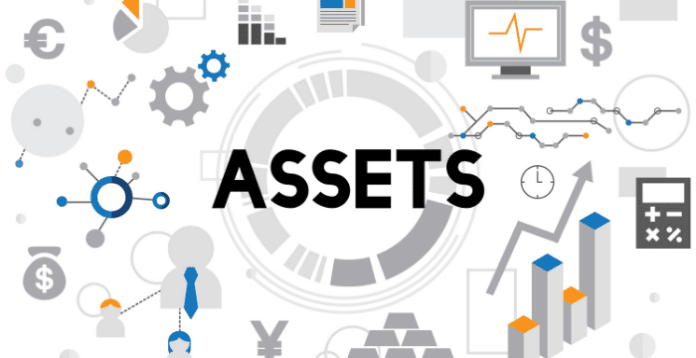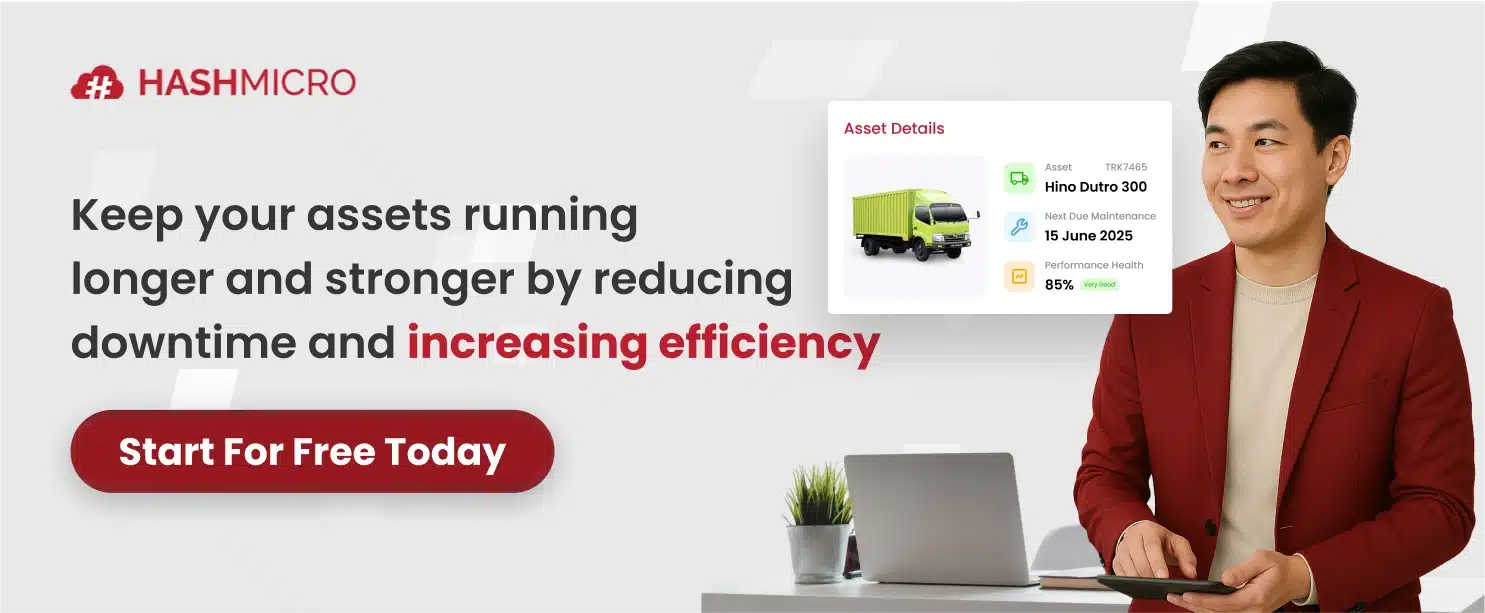One of the most essential parts of a company is the assets. There is a wide variety of uses for assets, such as contributing to profit growth or using them as collateral for loans. By definition, an asset is a resource that an individual, organization, or nation owns or manages to increase the company’s value or improve its operations.
There are various types of assets, but many people often fail to recognize their differences. It is vital to discern them from one another so that you can correctly value a company’s worth in the market. Furthermore, it is also essential to know how to manage each type of asset with an automation tool like an Asset Management System.
There are three requirements an item must fulfill before it is categorized as an asset. First and foremost, the assets must represent ownership belonging to the company. It must also have economic value through means of exchanging or selling. Lastly, it can also give economic benefits in the future.
Once your assets have checked these three boxes, you can now classify your assets to know where they would belong on the balance sheet. The three ways assets are generally classified are based on their convertibility to cash, physical existence, and purpose. We will elaborate based on the convertibility classification in this article since it is the most common way assets are written on a balance sheet.
Also read: Why Asset Management Solutions Matter More Than Ever
Table of Content:
Table of Content

Current Assets
The first type of asset is called current assets. It is a component that must be recorded in the balance sheet. For an item to qualify as a current asset, an item needs to be consumed entirely within one year.
Current assets tend to be easier to measure, so accountants are most likely to review the assets regularly. Examples of current assets include cash and cash equivalents, marketable securities, prepaid expenses, accounts receivable, and inventory. Current assets are, for example, more commonly found in retail asset management.
Cash and cash equivalents
Cash and cash equivalent are the amount of money in cash or other assets you can liquidate into cash. However, there is a requirement to classify an asset in this category. Since it needs to be ready for conversion into a definite amount of cash, it cannot change drastically in value.
This means that the item needs to be near its maturity date, so the interest rate of the item does not change. What qualifies as cash are petty cash and coins, currency, cash in checking or saving accounts, bank drafts, and money orders. On the other hand, examples of cash equivalents are money market funds, short-term bonds, and marketable securities, which we will elaborate on next.
Marketable securities
Marketable securities can be classified as cash equivalents. It is an investment you can easily trade into cash due to its strong secondary market. These securities are usually available on a public market where price quotes are more accessible. However, the return on investment tends to be lower since it has a high level of liquidity. These assets are recorded as current assets because the maturity period is less than a year.
Marketable securities can consist of:
- Treasury bills
- Stocks
- Preferred shares
- Certificates of deposit
- Banker’s acceptances
- Commercial paper
Prepaid expenses
A purchase is considered a prepaid expense when the company purchases it in one accounting period but uses it gradually over a specific period. Prepaid expenses usually come in the forms of items lease, rent, bulk orders, and insurance. It counts as an asset because an item or resource is available without paying as you use it.
For example, a company had paid an operating lease for a one-year office equipment for $3600. The balance sheet will record this expense each month for $300 until the time of lease is up. Your company’s accountants do have the choice to charge the entire cost at the beginning immediately, but it will accelerate the recognition of the expense in your balance sheet.
Accounts receivable
Accounts receivable is the amount of money a company is entitled to receive from buyers’ unpaid purchases. The seller will issue an invoice with the owed amount, which implies that the seller has given credit to the buyer. The credit limit will vary depending on the company’s financial condition, the buyer’s history with the seller, and the buyer’s financial situation.
If a seller cannot pay the receivable on time, there is an option to extend this receivable as notes receivable. Notes receivable involve a contractual agreement between a seller and buyer in which the buyer agrees to make scheduled payments to the seller at a later date with an additional interest fee. If the buyer cannot abide by this agreement, the seller may be able to seize and sell the customer’s assets as payments if the terms of the contract permit this.
Inventory
The term ‘inventory’ refers to any assets that businesses keep in storage before selling. We can consider an inventory as a current asset if it has less than one year of lifespan. This includes products that are in the process of being manufactured, raw materials or supplies, finished goods that are ready to be sold, and purchased items.
When a company’s primary product is a service rather than a tangible object, inventory can refer to the costs of providing a service for which the associated revenue has not yet been realized. Because inventory management is highly complex, it is in your best interest to investigate inventory as its distinct component of your organization and determine the most effective strategy to optimize your inventory.
Also read: Top Asset Management Software Features You Should Know
Non-current Assets
Long-term or non-current assets are the resources a company expects to use productively for longer than a year. This type of asset will be labeled as fixed asset in the accounting books. As time passes, there will be an accounting adjustment to account for the age-related decline in the value of the assets called depreciation.
Depreciation will be allocated to the balance sheet because the company needs to consider that the item’s quality decreases as we use it more. You can further categorize non-current assets into tangible fixed assets, intangible fixed assets, and goodwill.
Tangible fixed assets
As suggested in its name, tangible fixed assets consist of properties that are tangible or physical. If you can touch the items, you can group them in the tangible fixed assets category. Examples of tangible fixed assets are machinery, vehicles, equipment, furniture, land, and buildings.
Notice that the examples are all long-term assets. That is because non-current assets are not intended for sale or for the company to convert into cash. Companies use tangible assets to compete with other businesses by using these assets in their production process. These assets will need insurance coverage and regular maintenance in order to retain their values and productive capacities.
Intangible fixed assets
Intangible fixed assets is the opposite of tangible assets. It is assets that have no physical form, so their value comes from the potential revenue they could bring to the company. Patents, trademarks, copyrights, and customer lists all fall within the category of intangible assets. As with tangible assets, companies must use these assets for more than one accounting year in order to recognize them as intangible assets.
Furthermore, the company must purchase the assets instead of developing them internally. The asset documentation in the balance book will be written down in their original purchase price. The accounting will be adjusted as time goes on when amortization starts to take place. Amortization accounts for the decrease in the value of an asset over time as you consume it more, and the balance sheet will take note of it periodically.
Goodwill
The market worth of a business is not just the sum of its assets. It is likely that when you acquire an existing company, you will have to pay more than the net value of its assets and liabilities to account for the worth of the acquired company’s reputation in the marketplace. This is what we know as goodwill. Accountants consider goodwill intangible since its value is subjective and difficult to pin down. Additionally, it is also considered a fixed asset due to its long lifespan.
Here are a few aspects that we can categorize as a part of goodwill:
- Brand name value
- Employee relations
- Customer relationship
- Strategic location
- Stable lease
- Product or service uniqueness
Conclusion
It is essential for a company to categorize its assets properly. In order to evaluate the company’s net capital, you must first determine which assets are current and which are non-current. You can improve your ability to manage them by understanding the different characteristics of various asset types.
Asset Management Software is the right tool to aid you in controlling your company’s assets as effectively as possible. You can calculate the valuation of your assets automatically and accurately with the software’s help. Not just that, you can ensure that your assets are in good condition through maintenance reminders.
However, not all software can give you a wide range of features to assist asset management. This is where you need to be more mindful in choosing the right software provider. Your software must make daily operational tasks easier with robust features accessible through one centralized platform.
It might sound like a challenging feat to achieve, but it is possible to get comprehensive and high-quality software that fits your budget with HashMicro Asset Management Software. HashMicro equips its software with reporting, tracking, and logging features customizable to your company’s needs.
Experience the beneficial features with our free demo and get maximum control of your assets with HashMicro Asset Management Software.
























































